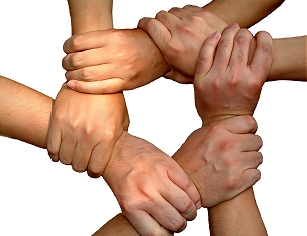Teams are usually selected or authorized by the quality council. A team will consist of a team leader, facilitator, recorder, time keeper and members. All team members have clearly defined roles and responsibilities. The team leader, who is selected by the quality council, sponsor or the team itself, has following roles. Ensure the smooth and effective operation of the team, handling and assigning record keeping, orchestrating activities, and how overseeing preparation of reports and presentation. Facilitate the team process, ensures that all members participate during the meetings, prevents other members from dominating, actively participates when appropriate, guides without domineering, and uses positive interpersonal behavior. Serves as a contact point between the team and the sponsor or quality council. Orchestrates the implementation of the changes recommended by the team within organizational constrains and team boundaries. Monitor the statues and accomplishments of members, assuring timely completion of assignments. Prepare the meeting agenda,Continue reading
HRM Concepts
Characteristics of Successful Teams
A team can be said to be a group of people working together to achieve a goal. It can also be seen “as a limited number of people who have shared objectives at work and who co-operate, on a permanent or temporary basis, to achieve those objectives in a way that allows each individual to make a distinctive contribution”. In order team to be effective, it should have certain characteristics, listed below Sponsor: In order to have effective liaison with the quality council, there should be a sponsor. Preferably the sponsor is a member of the quality council, thereby providing organizational support. Team Charter: A team charter is a document that defines the team’s mission, boundaries, the back ground of the problem, the team’s authority and duties and resources. It also identifies the members and their assign the roles-leader, recorder, timekeeper and facilitator. The sponsor and the team negotiate theContinue reading
Team: Definition and Important Types
Definition of Team A team is defined as a group of people working together to achieve common objectives or goals. Teamwork is the cumulative actions of the team during which each member of the team subordinates his individual interests and opinions to fulfill the objectives or goals of the group. The objective or goal is a need to accomplish something, such as solve a problem and improve a process. Members of a team will need to focus on how they relate to each other, listen to the suggestions of others, build on previous information and use conflict creatively. They will need to set standards, maintain discipline, build team spirit and motivate each other. Each member of the team has their own history of experience to help achieve the objectives. They should have a need to see the task completed, but also the need of companionship, fulfillment of personal growth andContinue reading
Modern Organizations and Role of Leaders
Organizations are indispensable to human and civilization progress and in meeting societal needs. Organization and civilization are interdependent twins; one could not develop without the other. Today in modern societies, organizations shape values, set structural roles and norms in civilization directions, change and determine human destinies, and perform a wide range of functions from integration and human fulfillment to disintegration and individual alienation. From their birth, organizations were simple in structure and management, but as they grew larger they became sophisticated and complex in structure and function, requiring managerial skills and techniques beyond the comprehension of many people. In modern day organization the workload is designed to promote and maintain health aspects of employees. Additionally, much importance is given to contextual factors such as the technology and the environment of the organization and the professional level of the employees. In today’s era, an organization or a workplace is not confinedContinue reading
Organizational Leadership
Organizations play a very important role in societies. From birth to death we deal with organizations, small or large, public or private. Organizations formed by human beings sometimes even control us, dominate society, stifle development or progress, promote growth and change, alter our environmental conditions, and at the same time fulfill our human and societal needs. Their role is multidimensional and dual in nature: they can contribute to the progress and satisfying human needs, but at the same time they can be a major obstacle in fulfilling accomplishments. They are a powerful instrument in governance and the promotion of democratic values. Initially organizations were simple in structure and management, but as they grew larger they became sophisticated and complex in structure and function, requiring managerial skills and techniques beyond the comprehension of many people. Now here comes the role of the leader who could filter the negative traits and thusContinue reading
Case Study on New Performance Appraisal System at Xerox
In the mid-1980s Xerox corporation was faced with a problem–its performance appraisal system was not working. Rather than motivating the employees, its system was leaving them discouraged and disgruntled. Xerox recognized this problem and developed a new system to eliminate it. Old Performance Appraisal System The original system used by Xerox encompassed seven main principles: The appraisal occurred once a year. It required employees to document their accomplishments. The manager would assess these accomplishments in writing and assign numerical ratings. The appraisal included a summary written appraisal and a rating from 1 (unsatisfactory) to 5 (exceptional). The ratings were on a forced distribution, controlled at the 3 level or below. Merit increases were tied to the summary rating level. Merit increase information and performance appraisals occurred in one session. This system resulted in inequitable ratings and was cited by employees as a major source of dissatisfaction. In fact, in 1983,Continue reading

